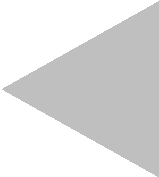THE OBSERVER — JANUARY 27, 1917


Recent paragraphs in The Observer about the discovery of what was at first thought to be a winged snake, have called forth from our Green’s Plains correspondent the following effusion:—Some diversity of opinion has recently been expressed among correspondents of The Observer whether another correspondent really killed a winged snake, as he asserted, or was merely the victim of an optical illusion with a lizard. Now, although not for one moment doubting that it was either a snake or a lizard that was killed, or maybe both, I would like to say right here and now, that the first correspondent, unless his veracity has been of long standing and firmly established, made a serious mistake in killing the reptile off his own bat, without having first shown it to a friend, or friends, whose testimony might have been very useful just now. This shows how very careful one should be. There cannot be the slightest doubt about this having been a belated specimen of the winged snake aerial fleet.
These reptiles were very numerous and popular in the early days of the province, when distances were largely marked by distant grog shanties, and events simply by what happened—those far-away days when the native cat and the locust were sworn enemies of the pioneer, and sought his blood or crop by day or night. It was then in the gloaming that he listened for the whirl of the white-winged serpents, as they came in flocks to chase the marauders back into the gathering night, for these fireless flying serpents were very partial to locust and wild catty. And yet they were generally understood to be labelled “not dangerous” unless they hit something. There was, of course, an occasional overgrown specimen which might not be quite so handy or harmless about the place. For instance, there is the backblocker [one who lives in the outback], who, coming home in the dusk, saw and fired at, what he took to be a wild turkey flying low, and found when it landed almost in the door of his little grey home in the bush that it was a broken-winged and very indignant snake.
They both spent a wildly wakeful night. Another early pioneer, gun in hand, in broad daylight, saw rapidly approaching overhead, and mostly all head, some remarkable monster, which he would have mistaken for an aeroplane had those innovations been about in those days. As the whirring wings passed overhead, he shut his eyes and fired, and brought down a most fearsome-looking creature with the head of a shark and the slimy winged body of a snake, which on closer inspection it proved to be. The serpent had evidently undertaken—for a wager maybe, or maybe only for a meal—to swallow a full-grown lizard of the Jewish persuasion, and had succeeded in getting the brute down all but the head, which was unusually large, and ornamented with frills and whiskers, some of which had apparently caught in the snake’s teeth, and so in all probability saved both their heads.
And this is the only authentic local instance of a lizard flying, although there is not the slightest doubt that they could do so if they wanted to. The lizard is, how ever, more of a ground bird, and seems quite content to make haste slowly; and as in the case mentioned, only flies by compulsion. But there can be no doubt that now, as in the days of old, there are and were flying serpents, and The Observer correspondent who made the discovery, or rediscovery, need not be in the least discouraged, as it is a highly creditable one, and must prove interesting to science and other denominations.

From—The Observer (Adelaide, SA : 1905 - 1931) 27 January 1917 Trove. National Library of Australia.




